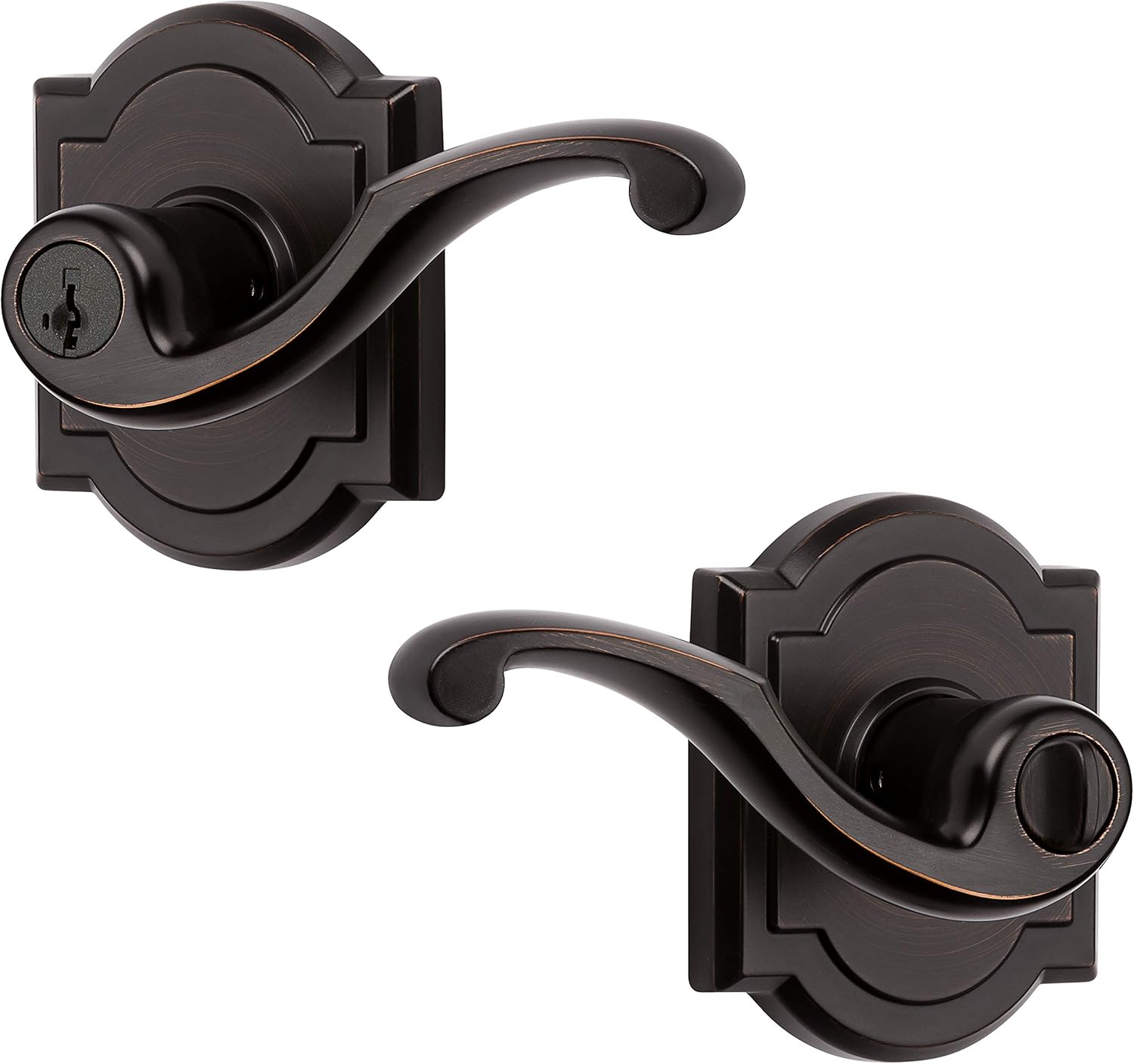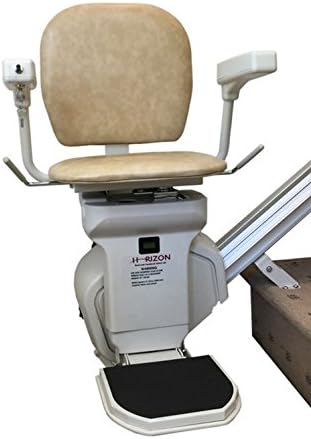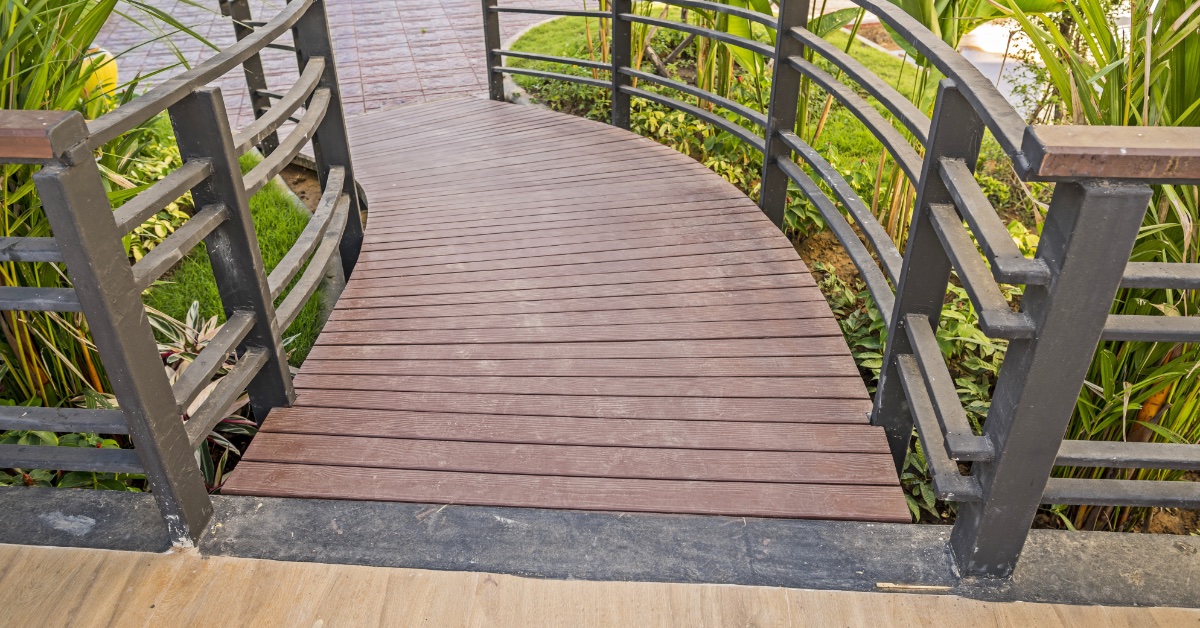When it comes to balancing charm with safety, everything starts at the door.
Entryways are a top priority for aging-in-place renovation projects. They not only provide the curb appeal that gives a home its character, they also mark the first trouble area for those with mobility issues or poor eyesight.
As people begin to get older, maneuvering in and out of a home can be difficult. Making the proper changes now can alleviate a lot of future headaches.
One of the first steps to take when remodeling your home for your retirement years is to address the entryways. To do this right, you’ll want to reach out to a Certified Aging-in-Place Specialist, also called a CAPS. A CAPS contractor can provide you with a variety of options to renovate your entryways into areas that are easily accessible while still retaining that charming curb appeal you value so highly.
Elimination of Steps
In the average home, one of the first barriers to entry for the mobility challenged is steps. Even if you’re not yet having trouble scaling the handful of steps leading into your home, you’ll want to consider eliminating or reducing them for the future. As a professional aging-in-place contractor, a big part of my job is offering advice to my clients on how best to eliminate steps altogether and build safer entryways.
In new construction, an accessible entryway can usually be incorporated into the home’s exterior design without too much trouble. A review of the lot’s elevation and grade should be completed to determine if it’s feasible to eliminate the steps.
If the entry steps cannot be eliminated completely, your CAPS professional should design them with the following features in mind:
- Closed risers to prevent injury from feet slipping through the opening
- Wider depth treads to accommodate mobility aids, like walkers
- Edges that prevent mobility aids from sliding off the tread
- Non-slip surfaces on the steps and the approaching sidewalk or walkway to reduce the risk of falling
- Non-glare lighting with two or more bulbs and motion sensor activation on the entry light fixture to increase safety
- Continuous handrails on both sides, colored to contrast with the wall for greater visibility
Simply removing or reducing steps is one thing, making sure you’re complying with all safety codes and local regulations is quite another. Your CAPS professional can help you through this part of the process, as well.
Increasing Room
The amount of space needed in your entryway depends on what door type and swing you choose, as well as your size and any mobility devices you may use daily.
Your CAPS contractor can help you determine what type of door and swing would work best in your home, as well as the amount of entry space you need. As an example, if the pull door does not have an automatic opener and closer, it will require a minimum of an 18-inch clearance just so the door will open. The amount of space needed also depends on whether the door swings left or right and whether you will be approaching the door from the side or front.
Your size and the mobility devices you use must also be considered. Typically, those using walkers cannot stand up completely straight, so the amount of space required needs to be measured. In addition, electric wheelchairs and motorized scooters usually require more space than a manual wheelchair. If you require a mobility aid, there should be a minimum turn diameter of 60-inches.
Entryway Shelving
Regardless of age, at one point or another we have all struggled to hold a package while trying to unlock the door to our homes. It’s difficult, and large packages sometimes slip out of our hands and onto the ground, possibly damaging what’s inside.
Shelves placed inside or outside of the door (or perhaps even both places) provide a much-needed surface for placing packages and other belongings while you unlock and open the door to your home. Utilizing the shelf makes you less likely to lose your balance or to drop the item or items while opening the door.
When speaking with your CAPS professional about incorporating entryway shelving into your renovation, make sure these design features are included to ensure convenience:
- Make sure the shelf is placed on the same side of the door as the latch or handle.
- The height of the shelves should be convenient both now and, in the future, when a wheelchair may become necessary
- The design of the shelf should provide a minimum width of 15 inches and a 12-inch projection from the mounting wall or rail
Entryway Shelving Product Suggestions for Aging in Place:
 Vintage Entryway Coat Rack and Bench
Vintage Entryway Coat Rack and Bench
Place this coat rack and bench set just inside your parent’s doorway and they’ll have an easy-to-reach place to throw a coat, purse or box as soon as they walk through the door.
 Outdoor Patio Bench
Outdoor Patio Bench
This outdoor bench placed near your entryway gives your parent a convenient place to put heavy items on the way into the house. A bench also gives them a place to sit and rest before they open the door if they need to, and it adds some extra storage and curb appeal.
 Outdoor Wooden Storage Cabinet
Outdoor Wooden Storage Cabinet
This waterproof all-purpose work station, potting station and storage cabinet in-one can be turned into a practical and stylish entryway cabinet. Its top shelf is high enough that your parent won’t have to bend down to place items on top.
General Hardware
When you’re transitioning to aging in place, one of the last things you may think about is the hardware that is used on your door. Not all hardware is created equal and changing your existing door hardware to an aging-in-place style is generally easy to do, relatively inexpensive, and can maintain the aesthetic appeal of your home.
Lever-style door hardware and push-button or remote deadbolt locks are two very popular hardware solutions for aging-in-place projects:
- Lever-style door hardware does not require any twisting of the wrist or gripping, and it is easy to operate with one hand, finger, fist, or elbow. If you have limited dexterity, this type of hardware is the perfect choice for a new door handle.
- Push-button or remote deadbolt locks are great if you have difficulty using a key to unlock your door. Some locks are even available with a built-in camera that can allow you or your caregiver to use a smartphone, tablet, or computer to view who is at the door. This option also allows for you to permit access to the guest remotely.
Here are a few suggested entryway hardware and deadbolt sets for your aging-in-place home.
Entryway Hardware Product Suggestions for Aging in Place:
Baldwin Prestige Madrina Entry Lever
 This is my favorite entryway lever without a deadbolt. Its ergonomic handle is incredibly well-designed for older hands and makes the door easy to open from both sides.
This is my favorite entryway lever without a deadbolt. Its ergonomic handle is incredibly well-designed for older hands and makes the door easy to open from both sides.
 Schlage Touch Century Lock
Schlage Touch Century Lock
This model from Schlage is a great option for keyless entry. The buttons are easy-to-push and at night an LED downlight illuminates the keypad for an even easier time getting in the door.
 August Home Smart Lock
August Home Smart Lock
This entryway lock uses smart technology to create a bridge between your current deadbolt and your home WiFi. This is a great device that’s easy to use. Your parent won’t need to lift a finger to lock and unlock their door.
 Smart Lock Remote Deadbolt
Smart Lock Remote Deadbolt
If your parent is comfortable with smart technology and controlling their home through their phone, this smart lock deadbolt is a great way to add comfort, safety and security. It makes your entryway keyless and has a remote unlock feature. When someone knocks at the door, there’s a built-in camera and two-way talk feature so your parent knows who’s there before opening the door.
Read more about my picks for the best entryway door levers in my article, “Best Door Levers for Adults with Arthritis.”
Vertical Lifts and Elevators
When working with your CAPS professional, it’s important to check state and local building codes to see if they allow the use of residential lifts in the interior or exterior of a home. There are many different federal and state regulations when it comes to clear floor space and the safety features of the lift.
There are four types of specialized equipment that you could include in your home:
- Vertical Lifts are used to travel from one level to another and are often used to replace a lengthy ramp. Typically, these lifts are required to be permanently installed and have safety features like interlocking gates and emergency stop buttons.
Vertical Lift Product Suggestion for Aging in Place:
 Electropedic Wheelchair Elevator
Electropedic Wheelchair Elevator
This sturdy lift helps your aging parent get inside without the use of a ramp. It can support up to 750-lbs and is safe and easy to operate.
- Platform Lifts would solely be used inside and provide a driveway type platform for wheelchairs to drive onto. The platform can then move up and down the stairs, eliminating the need for you to get out of the wheelchair. This type of solution requires enough space at the bottom of the staircase to accommodate the room needed for the platform and for you to exit easily. There are many different models to choose from, as some mount onto the steps and others are attached to the wall. When they’re not in use, many models can be folded up against the wall so that they’re out of the way.
- Chair Lifts are perfect if you have difficulty making it up and down the stairs. This type of lift consists of a rail attached to the steps or wall and a seat that glides up and down the rail. If you require the use of a wheelchair, you must be able to move from the wheelchair to the seat, as the chair lift won’t allow for your wheelchair to maneuver up the steps. Each lift is designed to the specific width and angle of each stairway, so your CAPS professional should consult with the equipment representative before moving the chair lift to a new stairway.
Chair Lift Product Suggestion for Aging in Place:
 AmeriGlide Horizon Stair Lift
AmeriGlide Horizon Stair Lift
AmeriGlide will custom cut a stair lift to your specific home’s stair set so you know it will fit and work well. They make a comfortable and safe lift.
- Elevators can be installed into an existing home, but usually an addition or large-scale remodel would be required. Residential elevators do not require the large space that is typical for a commercial elevator, but there are still specific requirements that need to be met. Your CAPS professional should consult an equipment specialist on size, clearances, and reinforcement if an elevator is something you are wanting to incorporate in the future. Also, be aware that elevators require regular maintenance to ensure they remain safe and functional, and in Florida, they’ll need to be inspected annually. In 2000, Florida privatized the inspection industry, but inspection companies still must go through a municipal regulatory authority. Your CAPS contractor can help you navigate those codes and requirements.
Ramps
Ramps can be seen as a necessary part of an accessible route, especially when the level and slope of a lot is not practical for anything else. For example, if entryway steps are unable to be eliminated, you could keep them but also install a ramp for those who need easier access. Keep in mind that accurate design solutions should give consideration to location, slope, landings, width, materials, handrails and curbing, and thresholds.
Location
If you are unsure about having a ramp because of its difficulty to conceal or even integrate into the design of the home, you may want to think about locating the ramp at a secondary entrance or incorporating it into the design of your home with the use of landscaping and other design treatments.
Unfortunately, the decision on where to place a ramp can also depend heavily on the dimensions and grade of your lot. For example, if a ramp can be placed where the grade difference of the lot is minimal, then that location would be ideal because it could decrease the length and cost of the ramp.
When working with a contractor to design your new ramp, there are several reasons that a straight ramp is preferable to ramps with turns or curves:
- Those who use a wheelchair can sometimes experience difficulty in navigating the curves due to weakness on one side of their body.
- People driving electric wheelchairs can navigate a straight ramp with greater efficiency, especially if the ramp is 36 inches wide.
- Straight ramps make it easier to provide landings as needed.
Slope
According to The International Residential Code (IRC), there are restrictions on maximum slope. The code restricts ramps to a maximum slope of 1:12, which means that for every 1 inch of rise, there must be 12 inches of ramp. There are some exceptions due to site constraints permitting up to a maximum of 1:8. These steeper ramps should only be used on short distances, like if one or two steps need to be overcome.
To determine the slope of a ramp, your CAPS professional should know that the ratio of the rise of length should range between 1:12 and 1:20. If the slope is 1:20, this is generally considered a walking ramp and, depending on the design and integration of the ramp into the landscaping, doesn’t require handrails or curbs.
Landings
Landings are an integral part of the ramp system. When locating and designing a ramp, there are a few important details that you and your CAPS professional should consider for the landing:
- Landings must be level for ease of use.
- Your health must be considered. If you cannot physically make it from one end of the ramp to the other without pausing to rest, intermediate landings should be incorporated into the design.
- Intermediate landings should be added for every 30 inches of ramp rise.
- The landing should be the same width as the ramp, except at the top, where it should be wide enough to allow for the opening and closing of a door.
- Ramps that change direction require landings that measure at least 5 feet by 5 feet to allow for a smooth turning radius, especially if you are using a mobility aid or equipment. The IRC only requires 3 feet by 3 feet, but a large area is preferred for ease of use.
- A cover over the entrance landing should be included to protect you and your guests from inclement weather.
Width
The minimum width for a one-way traffic ramp is 3 feet, but 4 feet is preferred. The greater width can accommodate you or any of your guests if they use an electric wheelchair or motorized scooter. It also provides more space to those who have an assistive animal accompanying someone in a wheelchair. If you want your ramp to accommodate for two-way traffic, the width of the ramp should be 5 feet.
Materials
There are many different types of materials that can be used for a ramp: concrete, brick, aluminum, pressure treated wood, or composite materials. The choice of material depends largely on the ramp’s location, whether it is permanent or temporary, and the preferred construction method for the climate. Brick is the least desirable material because it cannot provide an even surface.
Whatever material you ultimately choose, the finishes must be weatherproof and well maintained to provide the necessary traction, especially if the ramp becomes wet. A concrete surface should have a textured finish, while wooden surfaces can be finished with deck paint and an additional nonslip material.
Handrails and Curbing
When installing a ramp, your CAPS contractor should ensure your safety by incorporating the following handrail and curbing features:
- An interior handrail on each side of the ramp to allow you to pull yourself up
- Guardrails incorporated at 34 to 38 inches above the surface of the ramp
- A maximum diameter of 1½ inches for the handrail
- Continuous rails shaped for easy gripping and extending at least 12 inches beyond the top and bottom of the ramp (this will allow you or your guests to stabilize themselves, and allow anyone with a visual impairment to easily determine where the ramp starts and ends)
- Horizontal rails or vertical pickets
- A mid-height rail to protect you from falling off the sides of the ramp (this also enables you to pull yourself up in the event of a fall)
- Contrasting colored handrails to enhance visibility
- A minimum 2-inch curb on both sides of the ramp (unless one side is next to a wall)
Thresholds
The transitions from the ramp landing to the house and from the bottom of the ramp to the ground should be top considerations. There are many doors available with an accessible threshold option that give easier access. There are also many threshold ramps that can be installed between the ramp landing and the threshold.
Unfortunately, an often-overlooked aspect of ramp construction is the transition from the ramp surface to the ground. Threshold ramps, also known as beveled aluminum transition plates, create a gradual slope from the ground to the ramp surface. Without the transition plate, it can be difficult to create a bevel that is gradual enough to be easily traveled. Depending on local codes, it may even be a requirement for a minimum separation between the ramp material and the soil, meaning the end of the ramp may need to be constructed from concrete.
If a permanent ramp is not something that is necessary or feasible for you, a portable ramp could be a good option. You should always consult your CAPS professional and local codes, as there is a possibility of needing a building permit. Portable ramps are available in two types: folding and modular.
Folding Ramp Product Suggestion for Aging in Place:

Clevr Extra-Wide Non-Skid Portable Folding Ramp
This extra wide ramp can help older adults in wheelchairs and who use walkers get up over a set of stairs easily and safely. This model folds up and is easy to take with you.
Be sure to work with someone who understands the design and implementation of a ramp. There are many ways that a simple mistake can undermine its safety and usefulness.
When you’re ready to remodel your aging-in-place entryway, send me your questions using the comments section below. There’s a lot to consider and plan for before your entryway renovation and I’m here to help you each step of the way.
Good luck with your next aging-in-place home renovation!

